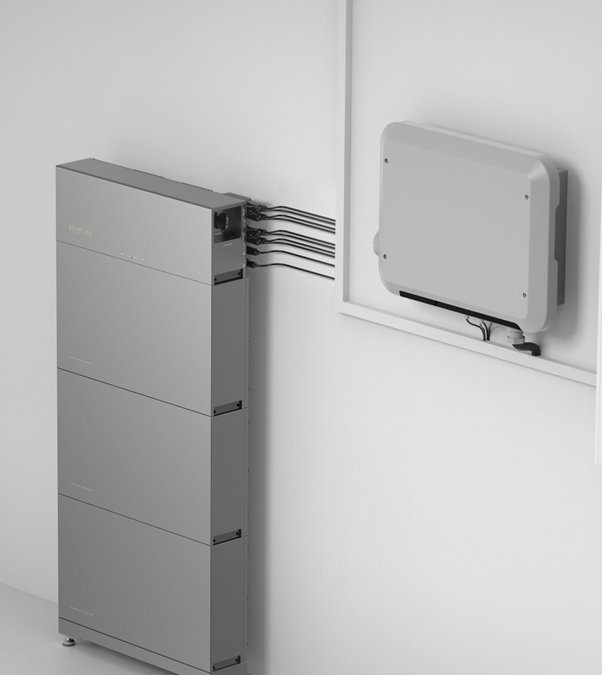How Does Solar Energy Work?
Harnessing solar energy to power your home helps reduce electricity costs and lowers your carbon footprint. However, this system remains mysterious to many, who don’t understand how pure sunlight can transform into electricity for the home. From capturing the sunlight to activating the cells, producing an electric current, and inverting the current to make it usable, here’s everything to know about how electricity is produced from solar energy.

Solar 101: How Is Electricity Produced From Solar Energy?
From sunlight to electricity, how does solar work? Here’s a step-by-step look at how solar panels produce usable electricity for your home.
Sunlight Activates PV Panels
The first step in producing electricity via solar power is sunlight. Solar power can’t happen without the sun shining, so there can’t be too much cloud coverage, and it won’t work at night.
Other conditions also impact sunlight absorption. Seasonal changes, such as in the winter, may reduce the amount of daily sunlight. Tilt and orientation also make a difference. Your home is suitable for solar panels if your roof allows the panels to face the south to receive maximum sun exposure and is tilted between -1 and 39º in the UK.
Each solar energy system consists of multiple photovoltaic (PV) panels, which are made up of individual solar cells. These cells are usually composed of semiconductor materials. Silicon is the most popular semiconductor used in PV panels. When the sunlight hits the surface of your panels, it activates the process of converting that solar energy into electrical energy, and the process, known as the photovoltaic effect, begins.
The Cells Produce an Electrical Current
After making contact with the PV cells, sunlight excites the electrons in the semiconductor material. This excitement creates motion, which is known as an electric current.
PV panels initially create a direct electric current (DC), a type of electricity. A single cell won’t produce enough power to be substantial, so all the cells within the panel work together, and all the panels within your array work together to create enough energy to power appliances or electronics. The more extensive your array, the more electric current you’ll generate and the more electricity you’ll ultimately have to use.
The type of solar panels also matters here. Monocrystalline and polycrystalline panels are the two most common constructions, with monocrystalline being more expensive but also much more efficient. They’ll produce a greater electrical current than polycrystalline cells, which are more affordable but less efficient.
The Electrical Energy Gets Converted
Since most homes, appliances, and electronics require alternating current (AC) to run, the DC power created by the solar panels must first get converted before it can be used. Now, it’s the inverter’s time to shine. The inverter is a component of a solar energy system that transforms DC electricity into AC electricity. Your system may use a string inverter, a microinverter, or a hybrid (grid-tied) inverter, which is what the EcoFlow PowerOcean (Single-Phase) and EcoFlow PowerOcean (Three-Phase) systems use.
Regardless of inverter type, they all perform the same function: safely and efficiently converting the DC power generated by your PV panels into AC power to run your home’s appliances.
The Converted Electricity Powers Your Home
Once the electricity is successfully transformed into AC power, it can be distributed throughout your home’s electrical system. You may have it connected to specific appliances or systems, like your HVAC, or it may feed directly into your main electric feed to power everything from your refrigerator to your washer and dryer and home electronics.
If your PV system produces more electricity than your home can use at a given time, the excess energy may be wasted. Some utility providers offer buy-back programs like the Smart Export Guarantee, which allows you to sell your surplus power to the grid. The credits you receive in return can help offset grid electricity costs.
Excess Energy Gets Stored for Later (With a Battery Storage System)
One optional step in the solar power system is a battery storage system. Many homeowners opt to integrate a battery backup like the EcoFlow PowerOcean DC Fit into their existing system to maximise the benefits of solar. Rather than sending the excess energy back to the grid or letting it go to waste, solar battery storage allows you to store it in its DC form for later use. When you need it, the battery can convert the energy into AC to make it readily available for your lights, appliances, heating or air systems, or electronics.
By incorporating a battery storage system, you can increase your energy independence, reduce reliance on the grid, and ensure a reliable power source even when sunlight is unavailable or the grid fails.

Final Thoughts
While the solar power process may seem elusive, it’s a simple four-step process (five if you have battery storage) that transforms the power of a sunny day into electricity that can power your refrigerator, HVAC, electronics, and more. From initial PV cell activation to the electric current conversion and transfer to your home’s electrical system, solar power is an efficient and readily available renewable energy source that can change how you consume electricity.
It saves you money long-term, contributes to a more resilient electric grid, provides insulation from power fluctuations and outages, and reduces the demand for limited resources like fossil fuels. Maximise your solar energy system with battery storage like the EcoFlow PowerOcean (Single-Phase) to enjoy the most benefits possible.




